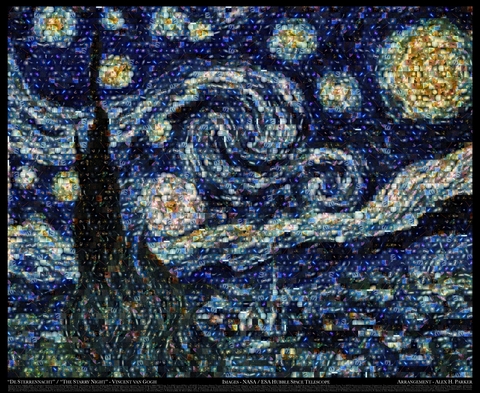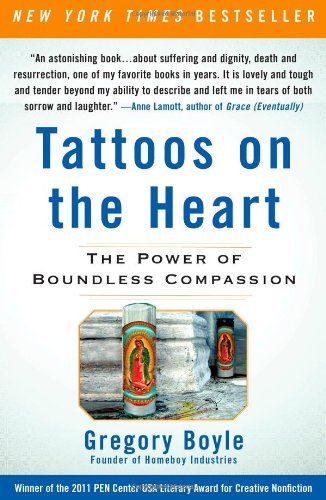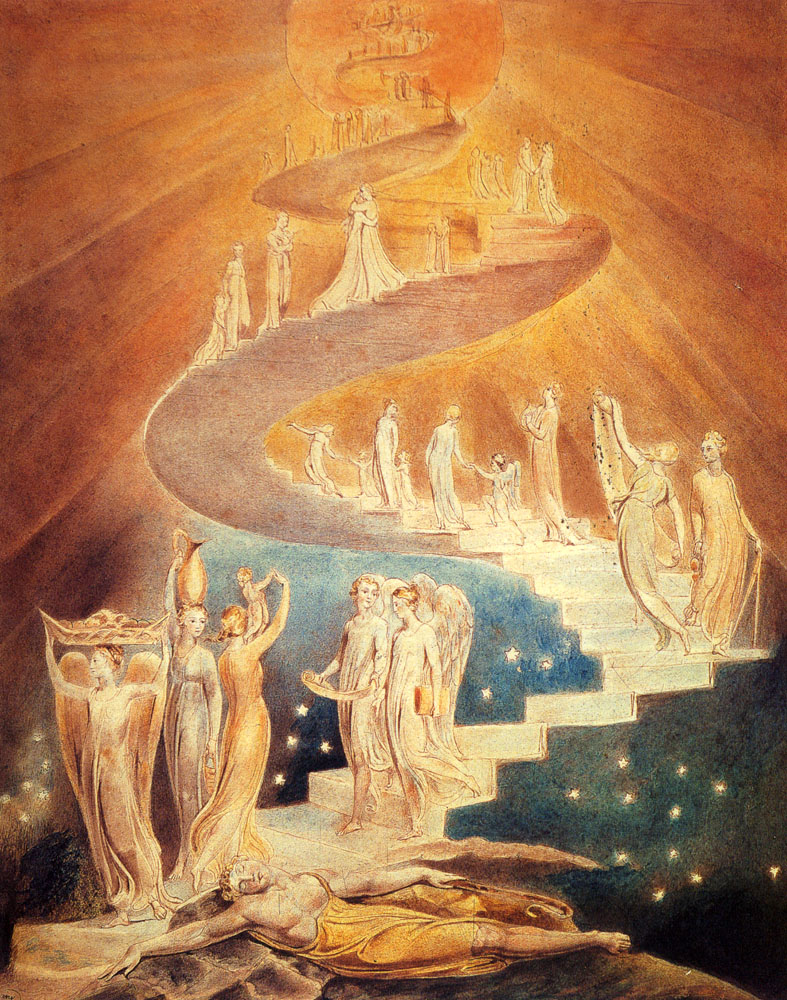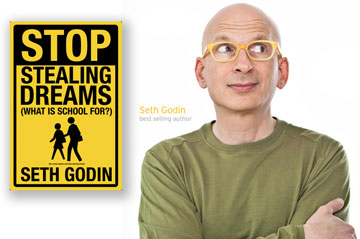In How the Universe Got Its Spots, Levin presents her thoughts on infinity, black holes, the topology of the universe, and the highlights and pitfalls of living with a calling to map it - intertwined with concise and poignant reflections on significant developments in her personal life - in a series of letters to her mother. These begin with her reports of moving from California to England with her boyfriend, Warren - an obsessive compulsive musician who left school at the age of fifteen and who, in addition to displaying an obvious penchant for bluegrass and triangles, is prone to nervous breakdowns upon return to his home country. Within the first few pages Levin has touched on her wonderings about the relationship between madness and the search for truth, questions about the supposedly infinite nature of the universe (an idea she cannot abide), and the universal human tendency to “throw our vision far beyond the limitations of our eyes.” Levin’s sensibility is unique in that she began her academic career in the field of philosophy. In her own words, Levin admits to having had "a comical stereotype of physicists memorizing things and being kinda rote... I thought philosophy was after the big questions. And It's very ironic, when I look back at my childhood, that I was absolutely mesmerized by cosmology and astronomy, even evolutionary science, ideas of natural selection. They had always captured my imagination, and with these gratifying sort of ways to think about the world.” As Levin recalls, it was a guest speaker in a philosophy class that altered her thinking: “Everybody in the room got very quiet... And what I was most impressed with was that philosophers didn't know how to respond. So I thought it was powerful. And I became interested in physics."
Levin encounters infinity as “a demented concept,” a perspective that she acknowledges would be lamentable according to many of her colleagues, but, as she rebuffs, “these are my letters, my diary.”
After reading the book and listening to her speak, I cannot help but agree. My notion of the cosmos, as a young girl situated between the figures of my grandparents in Sunday Church, and throughout over a decade and a half of of Catholic school, has always been inseparable from a the equal amount of time I spent playing scientist in notebooks and on index cards, keeping track of names for things, devising inventions, and - on one memorable afternoon that left me laid out on the dining room floor with a terrible case of vertigo - trying to devise some system for counting the number of raindrops that fell per second in a typical April storm. Reasoning about this behavior is dubious at best, but any open-minded child with a Saturday ahead of them is prone to wonder. And as my grandmother explained it to me on Sundays over the brunch that followed Mass, In the Beginning there was Nothing. And then God created the Heavens and the Earth: First there was Light, then the Moon and then the Stars. Later came Man. Once there was Nothing, then there was Something. And, as far as my limited sphere of understanding had instructed me, So it Was and Ever Would be World Without End, Amen. Which I took as my initiation into certain tendencies towards symmetry in the universe, although I never could have voiced it as such at the age of seven.
Perhaps I had progressive teachers, or because my mother subscribed to Omni and Popular Science, or perhaps because I grew up in the age of Pope John Paul II - who, as my grandparents and the nuns shared with me often, encouraged and fostered ongoing relationships between scientists and the Vatican, to explore common interests of cosmology, mysticism, and physics - I grew up understanding that the thrill of scientific discovery was a cousin to the sense of awe and wonder that came from standing in the post-Eucharist silence of church, pondering deep existential questions - or else in story, or while staring up at a sky full of cloud animals, or at a blanket of stars so dense that it made my head ache with the effort of trying to absorb them all. The ideas of science and the sensibilities of mythology and wonder, for me, have never really lived in opposition to one another (although I can relate to Levin's tendency to stereotype physicists as boring and clerkish, prior to actually knowing any). It would be decades before I was able to voice why. This capacity only came when I read a memorable passage by Joseph Campbell (in a context of describing how every religion is the enactment of a mythology) on the ways that science and mythology were simply different modes of explaining the same thing. One used experiment, the other story.
The part where it always got confusing, in both mythological and scientific modes, was precisely the part about infinity. If God goes on and on, I used to wonder, and the universe does too, then how can anyone really say that everything is contained within the sphere of the divine - that is, unless that which is divine is something that goes on and on endlessly and yet exists within a complete system unto itself?
“Look,” Levin puts it, in explanation as to the ways that intuitions may sometimes be misleading, “it seems logical, once one understands the concept of velocity, and the concept of infinity, that one would be able to imagine going faster and faster by infinite degrees.” But this concept, as Levin observes, is at odds with empirical evidence. We do have a limit, and we reach it at the speed of light.
All that I knew about this field prior to first reading Levin’s work over a decade ago, and aside from passing references and constant wonder, involved a few literary encounters with the work of Carl Sagan in high school, of which I mainly remembered his observation that “We are all star stuff.” Carbon, Nitrogen, Oxygen, - even space and time and gravity itself - all emerged from the big bang. Recognition that we share a common inception makes it difficult to not to wonder if we don't also share some other common elements of fate as well. There was nothing, and then there was something, and there we all were - stars, ether, the echo of the big bang itself, the black holes, the supernovas, the peaks and valleys in the fabric of it all: what to make of such largesse, and even if we can agree in theory on a beginning, how does anyone begin to imagine the rest of it?
One of many aspects of Levin’s thinking that is admirable and compelling: her observation that “my faith in nature and its laws is deeper than my need for uniqueness.” This in follow-up to her observation that, if one accepts the concept of infinity, one must also accept - by extension - the strong possibility that there are other versions of each of us out there. Levin can “welcome the infinite in mathematics” while still maintaining that she would be “pretty shaken to find the infinite in nature.” In explanation of this seeming paradox, Levin offers this:
I don’t feel robbed living my days in the physical with its tender admission of the finite. I still get to live with the infinite possibilities of mathematics, if only in my head.
She traces various developments in the field from Tycho Brahe, to Newton, to Max Planck, following the discoveries that led to Einstein’s game-changing theory of special relativity, and while she considers Einstein a hero (in no small part for “his defiant brilliance in the face of his own limitations,” referring to how he never allowed the clumsiness of his calculations to stop his earnest quest for large-scale theories about the laws of the universe), she recognizes - as did Einstein- that his quantum theory is ultimately incomplete. Mulling over the field-altering discoveries that Einstein and others observed, she invites readers to reconsider the commonly acknowledged but perhaps under-appreciated revelation that space and time are relative, not absolute. This suggests curves and folds in the cosmos which had once been thought to be flat and homogenous.
Levin’s habits of mind are admirable on many levels, and one reflection of her elegant thinking may be found here: “I try to find a simple expression for my ideas. I figure if there is none, the ideas might be wrong. And yet, she never shies away from asking questions that threaten to overwhelm by leading one down a virtual rabbit hole of mind-warping complexities, as when she confesses to mom: “I’m not just wondering if spacetime is finite, I’m wondering if we can look out and see the whole thing.”
Her thinking is poignant and ripe with mystical elements, although she never abandons her commitment to the sober gaze of the scientist. Her reach is evident in musings like this:
..we are the product of the universe and I think it can be argued that the entire cosmic code is imprinted in us. Just as our genes carry the memory of our biological ancestors, our logic carries the memory of our cosmological ancestry. We are not just imposing human-centric notions on a cosmos independent of us. We are progeny of the cosmos and our ability to understand it is an inheritance.
And later, when she observes, along similar lines of thought:
There are no walls built in the human mind making some of us scientist and some of us artist. They are branches of the same tree, rooted in a common human essence. Maybe it’s our ability to step between the different disciplines, weaving strange loops all the while, that’s at the core of our creativity. The drive for knowledge must be as innately human as any of our more carnal desires. Maybe the compulsion to ask these questions is rooted in the structure of our minds. Maybe the answers are too.
If the above may be recognized as evidence of her reach, the following may be offered as evidence that she immune from any critique of being some soft-shelled wonderer with a mystical bent who may or may not care about the precise nature of the suppositions he or she wonders about:
…the enigma of quantum mechanics tempts abuse. People try to treat quantum mechanics as synonymous with supernatural. But just because we don’t understand it doesn’t mean all sanity has abandoned us. We can use the predictions of this confounding theory with stunning accuracy in the tremendous colliders that particle physicists have used around the world. It is probabilistic instead of simply deterministic, but it is still predictive and not utterly wild and random.
Other topics I’ve love to go into: the way that supernovas collapse into the bodies of neutron stars, “smaller than Manhattan spinning thousands of times per second,” the way that human eyes are precisely tuned to interpretation of the spectrum of light emitted by the sun, and a few stunning facts about black holes: how they absorb matter and energy through a vacuum that acts as “ a cut in the fabric of space..” The way that black holes evaporate, and how before they do so, they can only be measured by examining the matter and light that they absorb (I’ll admit that here I am drawn by a strong tendency to anthropomorphize, for is it not so that the same can be said of the black holes in each of our lives? Often, we may only observe them by observing what they consume. Certain laws of being seem to consistently prevent us from ever being able to conceive of these head-on. I realize that this hunch is neither provable nor scientifically sound, but I am an admirer rather than a practitioner of these studies, and it could be argued that, as such, I cannot help it.)
Here I’m going to try to get to the truth alluded to in the title. Levin’s intimate and down-to-earth tone - combined with her focus on simplicity - have the effect of imbuing the reader with a level of confidence in approaching some rudimentary description of certain theories that is utterly unearned. (If questioned, I’m inclined to retort with, “Well, it’s like Janna said…,” which alludes to the intimacy of writer-reader relationship that is certainly a hallmark of this book’s appeal.) This connection arrives via the strain of wonder at the unknowable and celebration of science’s quest for knowledge, that runs through all of her letters, and in which she observes how:
We live at a time when people have the tenacity to analyze the data of telescopes, build satellites, and develop detectors that, when put together, could actually determine the fate of the whole cosmos.
Here is where she comes across, for this reader, as a kindred spirit - when she observes that “each answer I learn releases a rainfall of new questions.”
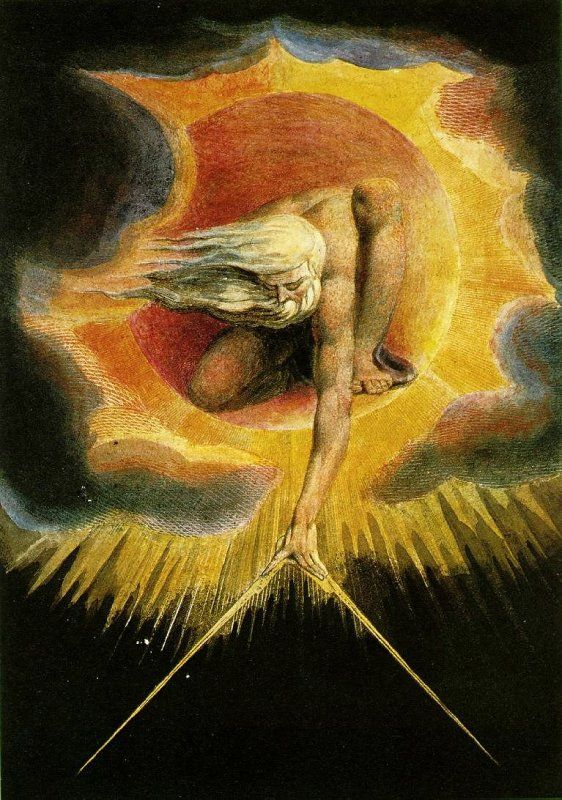 |
| William Blake's Ancient of Days |
More fuel for thought: the echo of the big bang as measured unexpectedly (except to a few forward-thinking theorists) from New Jersey by Bell laboratories in 1967. In order to echo, sound must have something against which it refracts. Such a phenomenon gives strong support to Levin’s hypothesis that the universe, though “really, really big” may be finite, rather than infinite.
If finite, how is it shaped? Is it a two-dimensional plane, rolled inward upon itself the way a piece of paper may roll in on itself to become a cylinder - or, if slightly more flexible like a piece of cloth, rolled inward like a cylinder and then around again so that the two ends touch, in the form of any number of elaborately curved manifolds that have been proposed as possible shapes of the space (and time) we inhabit?
Perhaps it has handles and holes. Certain facts strongly suggest that it is much more likely that it has some sort of irregularities, in the forms of bumps and valleys, than that it is completely smooth. One of the strongest suggestions of this comes in the form of hot and cold spots. If the universe were infinite and expanding with equal wavelength in all directions outward from the same common point in the big bang, than it would seem to follow that the temperature of the ether would be constant and yet, it isn’t. It is spotted in hot and cool spots, not entirely unlike the spots of a leopard, and
which beg the question: “Can we observe he extent of the universe by looking for a pattern in the universe’s spots?” The thing that makes this significant comes from understanding that if the universe were smooth and infinite, the “light filling the cosmos would primarily ring at one wavelength, one note.” Which it seemed to do, more or less since the universe’s inception, for about 300,000 years, before developing series of small perturbations which Levin elegantly interprets as the “hills and valleys” of a melodic score. As she observes, “If the universe is finite, the score is not just cacophony but has natural harmonics and imprinted patterns - melody. This is what we search for.” Much of her work in the field of topography involves experimentation with models of folding dimensions, a sort of “intergalactic origami” intended to effectively catalog the possibilities of arrangement for compact spaces.
 |
| Model of Calabi-Yau manifold |
In a moment demanding of profound pause, Levin observes, “When we finally do have a TOE [Theory of Everything] that is also a quantum theory, all of our tales will have to be retold." It raises the question, Who will the observers be, then?
Endearingly, Levin wonders at the possible uselessness of her mathematical calculations, “Should I stop staring into space… shouldn’t I be more concerned with my ordinary life?" Reading this meditation calls to mind a line from a quintessential poet of the American Northwest, Robinson Jeffers, and his meditations on the “divinely superfluous beauty” of his natural surroundings. How could anyone fully conscious of it fail to be completely transfixed?
The storm-dances of gulls, the barking game of seals,Over and under the ocean ...Divinely superfluous beautyRules the games, presides over destinies, makes trees growAnd hills tower, waves fall.The incredible beauty of joyStars with fire the joining of lips, O let our loves tooBe joined, there is not a maidenBurns and thirsts for loveMore than my blood for you, by the shore of seals while the wingsWeave like a web in the airDivinely superfluous beauty.- "Divinely Superfluous Beauty" by Robinson Jeffers



